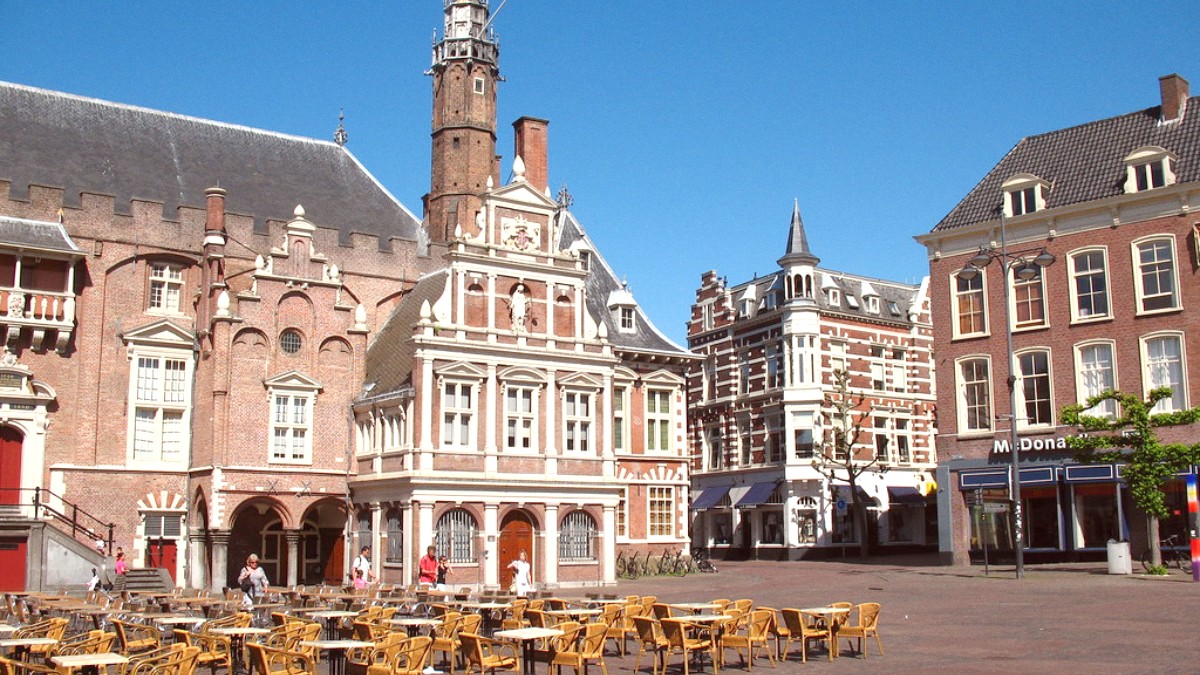
The Randstad, The Netherlands
Visitors find Haarlem welcoming. People cycle everywhere, a common sight across the Netherlands. Local markets buzz with activity. Independent boutiques offer unique finds. You easily spend hours exploring the historic center, finding hidden courtyards, or admiring the grand architecture. Haarlem presents a picture of authentic Dutch life, a favorite for travelers seeking a connection with the country. It is a city that welcomes exploration, rewarding those who take the time to wander its lanes and soak in its ambiance.
This guide provides practical insights for your trip to Haarlem. Find information on weather, budget, packing, and getting around.
This blend of urban comfort, historical depth, and natural beauty makes Haarlem a destination worth your time. Plan a visit to experience its unique atmosphere and discover why many travelers consider it a highlight of their Dutch adventures.
Haarlem is the capital of North Holland, located in the western Netherlands. It lies just 20 kilometers west of Amsterdam, a quick train ride away. This closeness allows visitors to experience Haarlem's charm while keeping Amsterdam's attractions within easy reach. The city forms part of the Randstad, a large urban area including Amsterdam, Rotterdam, The Hague, and Utrecht. Haarlem sits near the North Sea coast, with beaches like Zandvoort aan Zee and Bloemendaal aan Zee just a 15-minute ride away. The Spaarne river flows through the city, connecting it to the larger Dutch waterway system. Its flat landscape, typical of the Netherlands, makes cycling the main mode of transport.
Haarlem is a rich history dating back to the 10th century. It became a city in 1245, a prominent administrative and commercial hub. Its location on a trade route helped its prosperity, specifically through textiles and beer brewing. The 16th and 17th centuries marked Haarlem's Golden Age. After a Spanish siege during the Eighty Years' War (1572-1573), Haarlem had a period of great prosperity and artistic flourishing. Many refugees, including skilled artisans and merchants, settled in Haarlem. This era produced renowned painters like Frans Hals. The city's wealth is still visible in its grand merchant houses, the impressive Grote Kerk, and numerous hofjes – almshouses built by wealthy citizens. Today, Haarlem maintains its historical character, a living museum, inviting visitors to walk through centuries of Dutch heritage.
First mentions of settlement near the Spaarne river.
Granted city rights, marking its growth as a trade center.
A brutal period during the Eighty Years' War, shaping the city's resilience.
Period of artistic and economic prosperity, with famous painters like Frans Hals.
Industrial expansion and role in World War II resistance.
Haarlem delivers a balanced travel experience. It brings together history, art, nature, and comfortable city living. Find bustling squares and quiet courtyards. Experience its culture through museums and local customs.
Haarlem’s artistic legacy is strong. The Frans Hals Museum displays masterworks from the Dutch Golden Age. The Teylers Museum, the oldest museum in the Netherlands, presents an unusual collection of art, natural history, and scientific instruments. It offers a rare view into the Enlightenment era. Beyond these major institutions, Haarlem has smaller galleries and a lively contemporary art scene. Performances happen at the Philharmonie Haarlem and Toneelschuur, bringing music, theater, and independent films to the city.
Walk through Haarlem and admire its buildings. The Grote Kerk, also known as St. Bavokerk, stands tall over the Grote Markt. This impressive Gothic church has a pipe organ once played by Mozart. Around the Grote Markt, historic buildings like the City Hall show centuries of civic life. Explore the many hofjes, enclosed courtyards with small houses. These quiet retreats offer a glimpse into the city's philanthropic past. The Amsterdamse Poort, the only medieval city gate remaining, reminds you of Haarlem's fortified history. Many merchant houses along the Spaarne river keep their historic facades.
Haarlem's markets provide fresh local produce and a chance to experience Dutch daily life.
Haarlem presents a full travel picture. It combines history, art, nature, and urban comfort. Find bustling squares and quiet courtyards. Experience its culture through museums and local customs.
Haarlem is compact and easy to navigate. Walking or cycling are the best ways to explore the city center. Public transport connects Haarlem efficiently to Amsterdam, Schiphol Airport, and other Dutch cities. English is widely spoken, so communication rarely poses a problem. Haarlem offers a safe and welcoming environment for all travelers.
Haarlemmerhout Park and National Park Zuid-Kennemerland offer paths for walking and cycling.
North Sea beaches like Zandvoort are a short train ride away, offering sands and beach clubs.
Dining ranges from traditional Dutch street food to international restaurants.
Haarlem is compact and easy to explore. Public transport connects the city efficiently to major hubs. English is widely understood.
Haarlem is part of this urban area with Amsterdam, Rotterdam, The Hague, and Utrecht.
Beaches like Zandvoort aan Zee are only a 15-minute ride away.
The city sits on the Spaarne river, connecting it to wider waterways.
Just 20 km west, making day trips between cities simple.
Minutes from North Sea beaches, ideal for day excursions.
Well-connected within the economic and cultural heart of the Netherlands.